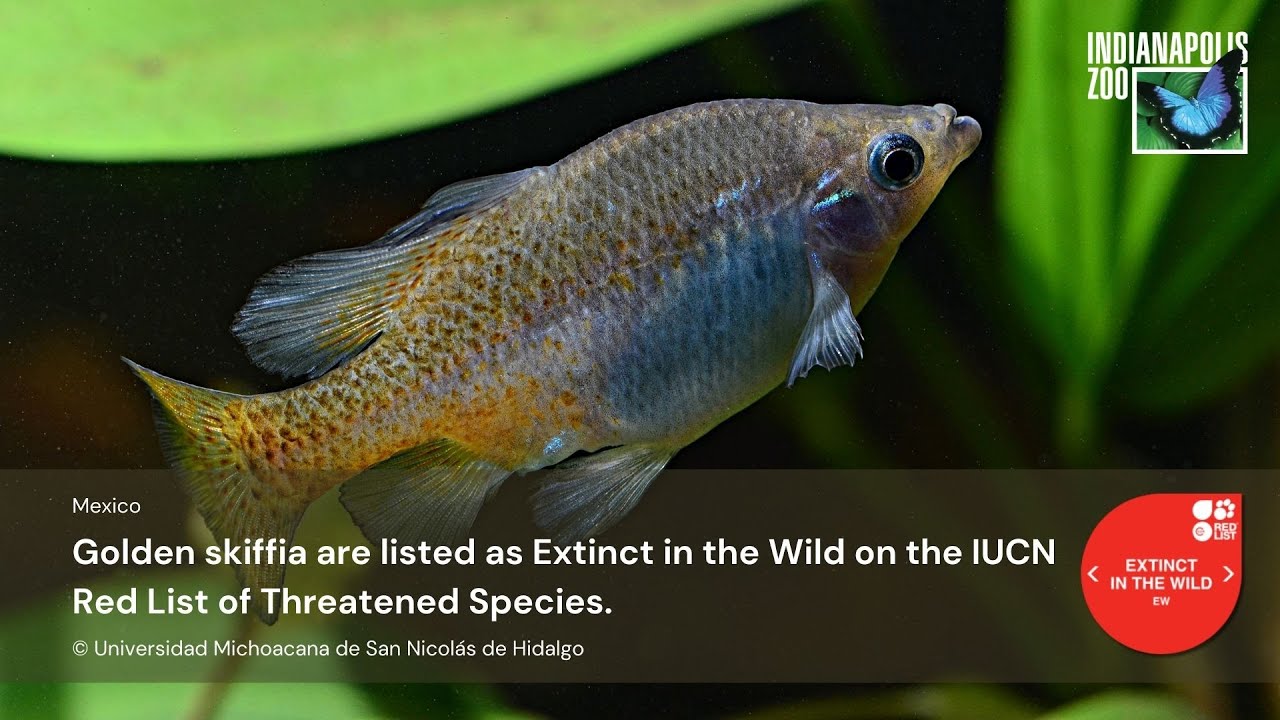– Overview of the Golden Skiffia, including taxonomy and physical description
– The natural habitat of the Golden Skiffia and environmental considerations
– The conservation status of the Golden Skiffia and efforts to protect it
– Challenges encountered in the conservation of Golden Skiffia
– Successful strategies and future directions in the conservation of Golden Skiffia
The Golden Skiffia (Skiffia francesae) is a captivating species in the family Goodeidae, renowned for its vibrant coloration and interesting behavior. This article delves deep into the biology, ecology, and conservation efforts surrounding this endangered freshwater fish, providing a comprehensive guide for those interested in zoology, zoo management, and wildlife conservation. The aim of exploring scientific information and conservation insights is to educate and engage readers on the importance of protecting such rare species.
**Overview of the Golden Skiffia**
The Golden Skiffia stands out due to its bright golden-yellow coloration, especially prominent in males. It reaches up to 6 cm in length, making it a relatively small yet visually striking species. Originating from the Teuchitlán River in Jalisco, Mexico, this species exhibits fascinating behaviors and a complex life cycle tied closely to its freshwater habitat. They are livebearers, with females giving birth to fully formed, free-swimming fry, which is a rarity among fish and highlights their unique reproductive strategy within the ecosystem they inhabit.
**Natural Habitat and Environmental Considerations**
The Golden Skiffia thrives in clear, slow-moving waters with abundant vegetation. Their habitat is crucial for their survival and reproductive success, as it provides shelter and food sources for both adults and fry. However, their natural environment is threatened by human activities such as pollution, water extraction, and habitat destruction. Preserving the Golden Skiffia’s natural habitat is paramount for their continued existence.
**Conservation Status and Efforts to Protect the Golden Skiffia**
The Golden Skiffia is currently listed as endangered by the IUCN Red List, and its population is experiencing a stark decline. Conservation efforts are in place, focusing on habitat restoration and establishing protected areas. Additionally, captive breeding programs have been initiated to help bolster their numbers. These programs aim to eventually reintroduce healthy, genetically diverse individuals back into their natural habitat, though this is a challenging process requiring careful planning and execution.
**Challenges in the Conservation of Golden Skiffia**
Conserving the Golden Skiffia presents multiple challenges. One of the major hurdles is the limited genetic diversity within captive populations, which can lead to inbreeding depression and reduced species’ fitness. Furthermore, restoring their natural habitat is a complex task that involves addressing the root causes of degradation, such as controlling pollution and managing water resources sustainably. Engaging local communities and stakeholders in conservation efforts is crucial but challenging.
**Successful Strategies and Future Directions in Conservation**
Successful conservation strategies for the Golden Skiffia involve a combination of in-situ and ex-situ approaches. Protecting existing habitats while improving water quality and availability is essential for their survival in the wild. Meanwhile, ex-situ conservation efforts, such as captive breeding programs, provide a safety net against extinction but must be carefully managed to maintain genetic diversity. Future directions likely include advanced genetic techniques to monitor and enhance genetic diversity, alongside continued habitat restoration and protection efforts.
Protecting the Golden Skiffia requires a multifaceted approach that balances immediate conservation needs with long-term sustainability. Leveraging scientific research to inform conservation strategies will be key in ensuring the survival of this species. By working collaboratively with local communities, conservationists, and researchers, there is hope for restoring the Golden Skiffia populations and safeguarding their natural habitats for future generations. Engaging the public through education and awareness can also play a significant role in supporting these efforts, emphasizing the importance of every individual action in the broader context of wildlife conservation.
*****
Source Description
The golden skiffia – also known as Tiro dorado – is a fish species that was endemic to the Tehuchitán River in central Mexico. The fish is thought to prefer benthic areas with slow currents and soft substrate, where it eats algae and invertebrates. The Goodeines subfamily is composed of 41 known species. Collectively, they are among the most at-risk fish in the world. Last assessed in 2018, the golden skiffia is listed as Extinct in the Wild on the IUCN Red List of Threatened Species. Major threats facing the golden skiffia include exotic species, parasites, pollution and habitat degradation.
If awarded $1 million from the Indianapolis Zoo’s Saving Species Challenge, conservationists would take the following steps:
– Reduce threats in reintroduction sites
– Establish protected area endorsed by government
– Engage landowners and local communities
– Reintroduce golden skiffia in the Tehuchitán River
– Control exotic species
– Expand environmental education programs
You can learn more about golden skiffia fish from the IUCN SSC Freshwater Fish Specialist Group.
The winner of the Indianapolis Zoo’s Saving Species Challenge will be announced later this year. Bookmark www.ProtectSpecies.com for updates.


